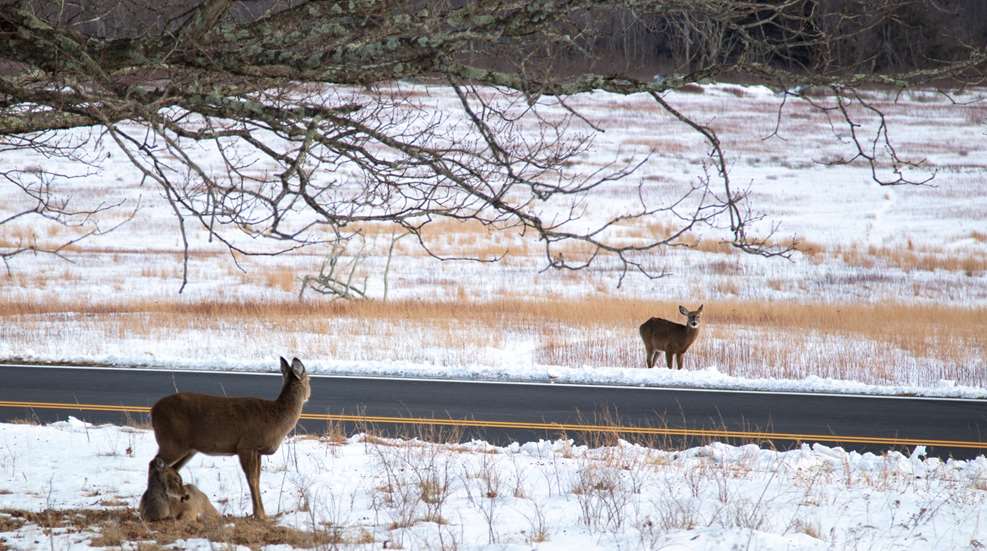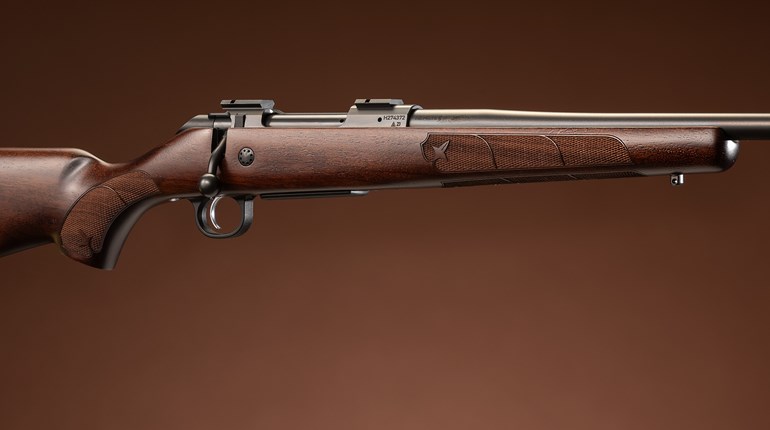
Despite covering close to 30,000 miles of rural roadways annually, surprisingly, I have yet to hit a deer. I’d like to tell you it’s because I always drive below the speed limit, keep my hands at 10 and 2, and do all of the other things that we were taught in defensive driving, but it’s not. No, I attribute my sterling quadruped-free collision record to the lessons that I have learned pursuing whitetail. The education received tracking and spotting these animals through dense foliage has transferred directly to the roadside environments where they often feed or flee.
I didn’t grow up hunting; therefore, my early days behind the wheel were littered with close calls and “shoulda known better” moments. These occurrences dropped dramatically during my mid-twenties, which coincidently also marks the beginning of my woodland endeavors. Gifted with amazing mentors, my initial teachings involved visually identifying “pieces” of deer moving through brush and wooded areas. I learned that the moment right before a whitetail harvest is nearly always marked by the animal stepping out entirely from the wood line and standing broadside—as if it were looking for you and eagerly awaiting its trip to the freezer.
The greater majority of my successes came from spotting a target that has yet to come completely into view. Studying the appearance of ears, tails and eyes when they are buried among the leaves has built an automatic photo album that runs through my head whenever I am in their neighborhood. In the past, movement of these parts would go unnoticed; now, a glimpse of white fur or a minor ear flick sets grabs my attention.
As my land access increased, I was able to begin planting and examining trail cameras. An invaluable tool for discovering movement patterns, they also exposed me to the annual breeding behavior of whitetail deer. In the early fall, it’s not uncommon to see multiple does sticking together. This means that you’ll seldom see one alone. In a tree stand, that means you probably don’t have to settle for the first one you see.
On the road, however, the lesson is that if one just crossed the road, you ought to slow down and cover your brake in preparation for another. As the weather begins to cool, the rut begins to set in. During this time period, bucks begin to address does that might be ready to breed. If she isn’t, she will flee. Therefore, if it is closer to Thanksgiving than it is to Halloween, it's safe to assume a doe sprinting full-bore across a highway will be followed by a testosterone-fueled buck. Coincidently, this is also when hunting season runs, so should a buck be the first animal that is spotted on the roadway, it’s not safe to assume he is the caboose on the love train. He could be injured, so be on the lookout for a sprinting hunter or tracking dog right on his tail.
The aforementioned activity would imply that autumn is the hot spot, and it is. However, the other months also foster a fair bit of deer movement. Naturally, breeding is followed by birth, which occurs during the spring and summer months. During these seasons, beware of momma deer chasing after her fawns. Lastly, winter also brings deer to the curb, as the greenbelts that line our highways are often the last remaining source of food.
After a few years of pursuit, I realized that sneaking into the woods before first light isn’t quite the stealth maneuver you’d imagine it to be. I say this because deer, like many animals, can see quite well in low light. We know this because their eyes reflect light back at night. This is a result of a membrane known as the tapetum lucidum, which translates to “tapestry of light.” This reflective piece of skin located behind the retina shines like a mirror and gives their eyes a second chance to use the light that just came in, enhancing their ability to see.
After realizing that you don’t always get to see them in pairs, I came to the realization that anything shining back at me should be approached with caution. What appears first to be a reflective piece of litter might actually be a solemn eye preparing to pop across the road.
This brings us to the old “deer in the headlights” adage. The saying that alludes to somebody freezing in place is indeed rooted in fact. A deer’s eyes aren’t as sensitive to bright light as a human's, and consequently, so they don’t recoil from it like you or I would. Therefore, if you come up on one standing on double yellow lines, don’t assume it’s going to run away. Additionally, sometimes, they finish that last step and cause a collision that way. The best move here is to come to almost a dead stop, pulling off to the shoulder if needed, and then proceed with caution.
Like many things in life, you never know where the lesson comes from. Hours of watching “When Cars Attack” in a library for an insurance credit didn’t do half as much for my driving as a few weekends spent in treestand, or reviewing woodland camera footage. By becoming a more efficient hunter, one will start to view the importance of animal activity in different settings. With that, we’ll leave to finish your preparations for opening day with the hope that you don’t tag out during your trip to camp!





































